Detecting a brake fluid leak is crucial for maintaining the safety and functionality of a vehicle’s braking system. Brake fluid leaks can compromise braking performance, leading to potential accidents and safety hazards on the road. Understanding how to find a brake fluid leak involves identifying common signs, inspecting brake components, and implementing diagnostic techniques. From visual inspections to pressure tests, the process requires attention to detail and a methodical approach.
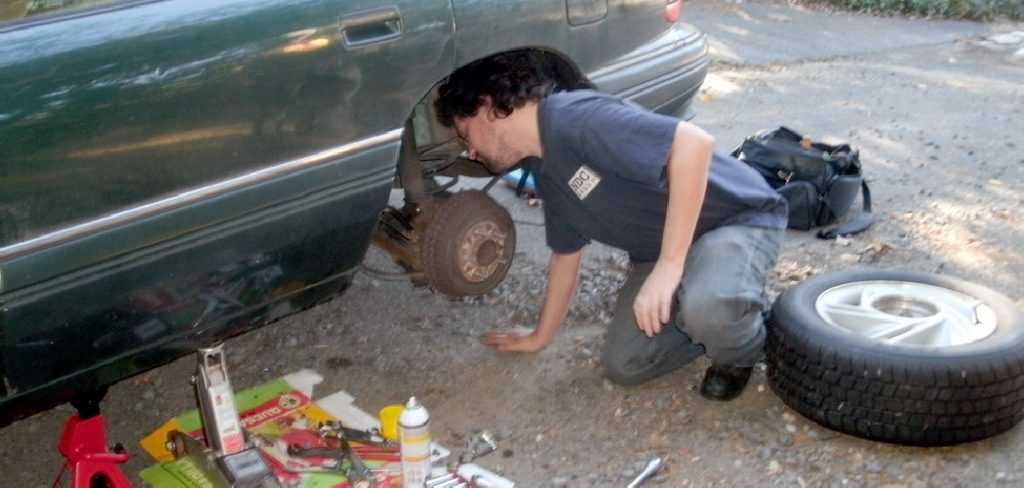
In this comprehensive guide, we’ll explore the essential steps and strategies for locating brake fluid leaks effectively. Whether it’s pinpointing leaks at brake line connections, wheel cylinders, or master cylinders, mastering this skill empowers vehicle owners and mechanics to address issues promptly and prevent further damage.
By detecting and rectifying brake fluid leaks early, drivers can ensure optimal brake system performance, enhancing both safety and peace of mind while driving.
Importance of Detecting Brake Fluid Leaks
Promptly detecting brake fluid leaks is paramount to vehicular safety. Brake fluid is the lifeblood of the brake system, and its integrity is essential for reliable stopping power. A leak can lead to a reduction in braking efficiency, or in severe cases, complete brake failure. Additionally, if left unchecked, brake fluid leaks can cause damage to other critical parts of the vehicle, such as the brake pads, rotors, and even the tires, due to contamination.
For vehicle owners, recognizing and addressing brake fluid leaks not only helps in maintaining the vehicle’s longevity but also in ensuring that the vehicle remains safe to operate for both the driver and everyone else on the road. However, for many drivers, detecting brake fluid leaks can be a challenge, especially if they are unfamiliar with the warning signs and proper inspection methods.
That’s why having a solid understanding of how to identify and address brake fluid leaks is crucial for any responsible vehicle owner or mechanic.
Signs of a Brake Fluid Leak
Recognizing the early signs of a brake fluid leak can prevent a minor issue from escalating into a major safety concern. Typically, there are several symptoms that may indicate a leak:
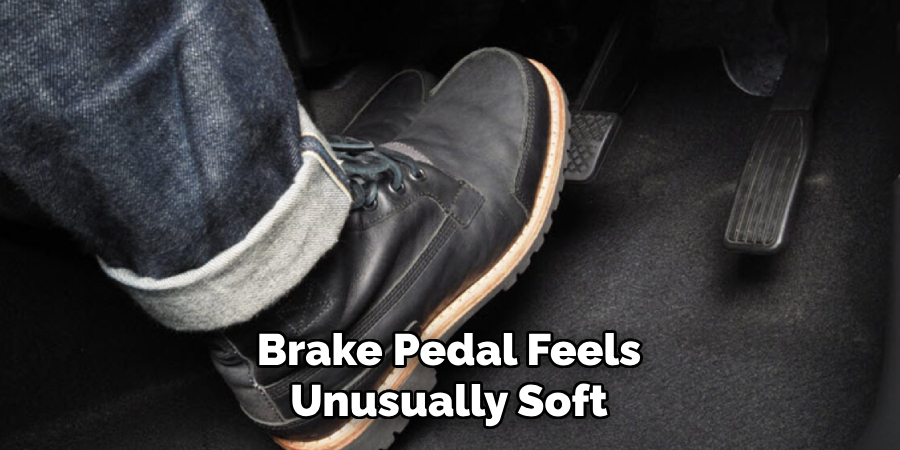
- Soft or Spongy Brake Pedal: If the brake pedal feels unusually soft or sinks to the floor when pressed, this is often a tell-tale sign that there’s a lack of hydraulic pressure due to a leak.
- Visible Fluid on the Ground: Pools of clear or brownish liquid beneath the vehicle near the wheels or along the path of the brake lines can suggest a fluid leak.
- Warning Light on the Dashboard: Many vehicles are equipped with a brake warning light that illuminates when there is an issue with the brake system, which could include a fluid leak.
- Reduced Braking Efficiency: Experiencing a decrease in braking power or the vehicle taking longer distances to stop may indicate a loss of brake fluid.
- Unusual Noises When Braking: Sounds such as squealing, grinding, or clicking during braking can sometimes occur if brake fluid levels are low due to a leak.
- Corrosion on Brake Parts: Brake fluid leaks can cause corrosion or damage to surrounding components, which might be visible during a visual inspection.
Promptly addressing these warning signs can help ensure that your vehicle remains safe and operational. It is important to undertake further inspection to determine the exact source and severity of the leak.
Inspection Preparation
Before delving into the process of identifying the specific source of a brake fluid leak, preparation is key. This includes assembling the necessary tools and ensuring your workspace is safe and suitable for conducting an inspection. You’ll need an adequate lighting source, protective gloves, safety glasses, clean rags, a jack and jack stands for lifting the vehicle, and a means to safely capture any leaking fluid.
Clear the area of any clutter to prevent tripping hazards and prepare a clean surface to lay out the tools and parts.

Once the area is set, make sure your vehicle is parked on a level surface, engage the parking brake, and place wheel chocks behind the wheels for added safety. Only then should you lift the vehicle to access the brake components. Be sure to follow the manufacturer’s instructions for properly and safely lifting your vehicle to avoid any accidents. With these precautionary steps in place, you can now begin the process of inspecting for a brake fluid leak with confidence.
The Critical Importance of Brake Fluid Maintenance
Proactive maintenance of your vehicle’s braking system is non-negotiable. The brake system is a hydraulic system, meaning it operates through the transfer of fluid pressure. Brake fluid is hygroscopic, which is just a fancy way of saying it loves water – and not in a good way. Over time, water absorbed by brake fluid can lead to rust in your brake lines, causing leaks and a degradation of braking performance. Regular checks help you catch potential leaks before they escalate.
The Dangers of Ignoring a Brake Fluid Leak
A brake system that loses pressure due to a leak can lead to soft, spongy brake pedals or a complete loss of braking capability – both scenarios nobody wants to experience on the road. Recognizing the potential signs and acting quickly can literally save lives.
Recognizing the Warning Signs of a Brake Fluid Leak
An effective diagnosis begins with recognizing the symptoms.
Soft or Spongy Brake Pedal
A brake system compromised by a leak may result in a pedal that feels soft and mushy. This is due to air getting into the system, which compresses more than brake fluid, requiring you to press the pedal farther for a response.
Low Brake Fluid Levels
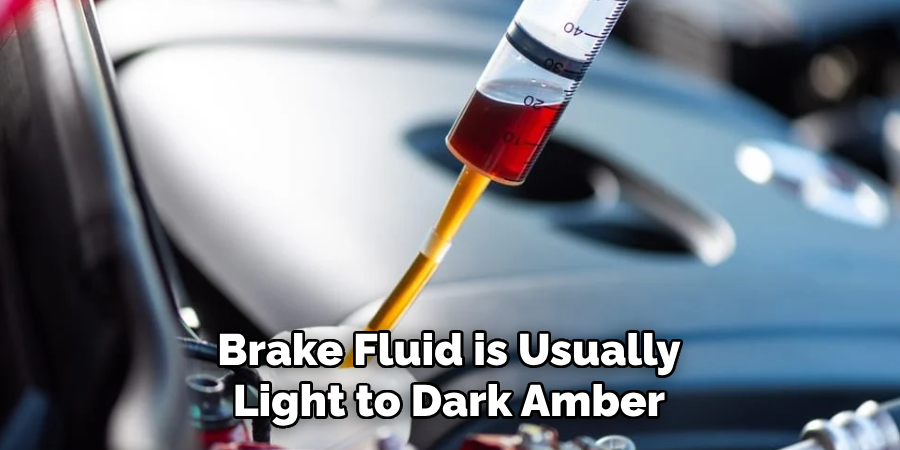
This appears to be the most obvious sign of a leak, but be sure it’s the brake fluid and not your power steering or transmission fluid. Each has a different color; brake fluid is usually light to dark amber.
Visible Leaks Under the Vehicle
Sometimes, you don’t need to be a car expert to know something’s wrong. Pools or droplets of fluids under the car should never be ignored. Similar to the previous symptom, make sure it’s brake fluid and not something else.
10 Methods How to Find a Brake Fluid Leak in Your Vehicle
Discovering a leak in your brake system is crucial for vehicle maintenance and your safety on the road. Here’s how to pin it down like a pro.
1. Visual Inspection of Brake Lines
With a flashlight, examine the brake lines for any visible signs of fluid seepage, such as wet spots or the discoloration of metal where the lines are attached. Look for any signs of damage such as dents, kinks, or corrosion on the lines. It is important to take a thorough look at the brake lines to ensure they are in good condition.
It is also essential to check the routing and placement of the brake lines. They should not be rubbing against other components, which may cause wear and tear over time. Make sure that there is no interference with other parts, such as the wheels or suspension components.
If you notice any issues with the brake lines during your inspection, they should be replaced immediately. Any damage to the brake lines can compromise their effectiveness and put you at risk while driving.
2. Check the Brake Master Cylinder for Dampness
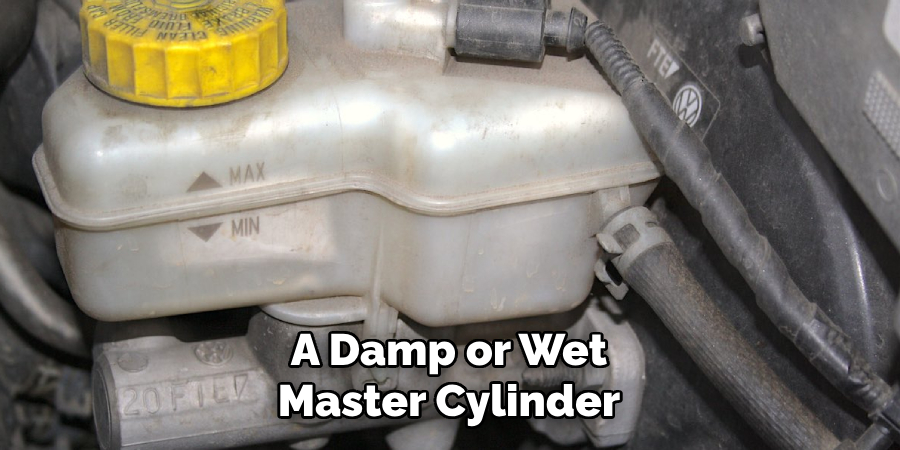
A damp or wet master cylinder could be a telltale sign of a leak within the brake system. Look for signs of fluid or build-up around the cylinder. If you notice any, it is important to address the issue immediately as a leak in the brake system can compromise your ability to stop and pose a serious safety hazard.
3. Inspect the Brake Calipers and Wheel Cylinders
These components are pivotal for your braking action. Watch for any fluid gathering around the pistons of the calipers or wheel cylinders. Additionally, check for any signs of leakage or damage. If you notice any issues, these parts will need to be replaced.
It’s important to keep your brake calipers and wheel cylinders in good condition as they play a crucial role in stopping your vehicle. Over time, the pistons can become stuck or corroded which affects their ability to apply pressure to the brake pads. If you notice any fluid buildup, it could indicate a leak which can cause a loss of braking power. Regularly inspecting these components and addressing any issues promptly will help ensure your brakes are working efficiently.
4. Search for Fluid Around Brake Hoses
Brake hoses connect the rigid brake lines to the calipers and wheel cylinders. Wiggle the hoses to see if there’s any fluid coming out or gather along the connections. This may be caused by a damaged or worn out hose, which can lead to loss of brake fluid and therefore, decreased braking performance. However, the fluid may also be coming from a leaking caliper or wheel cylinder, so it’s important to thoroughly inspect all components.
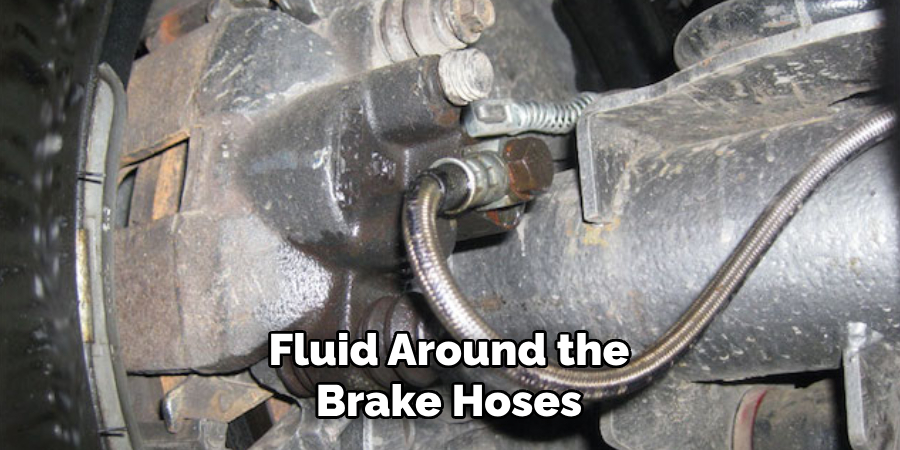
If there is fluid around the brake hoses, it is important to address the issue immediately. This can cause not only decreased braking performance but also potential safety hazards. Leaking brake fluid can also lead to corrosion of other components in the braking system and should not be ignored.
5. Pressurize the System and Look for Leaks
Have an assistant press the brake pedal as you look for fluid under pressure. This can sometimes lead to discovering a fine spray or drip that isn’t noticeable during a static check. It’s also a good idea to check all the connections in the brake system for leaks.
If you do find any leaks, make sure to tighten any loose connections or replace any damaged parts immediately. Leaks in the brake system can be dangerous and can lead to loss of braking power, so it’s important to fix them as soon as possible.
6. Check the Brake Fluid Level Regularly
A consistent drop in your brake fluid level often indicates a leak. Keep a close eye and mark the level at regular intervals to track changes. Most cars come with a transparent brake fluid reservoir, making it easy to visually check the level. If you’re unsure how to do this or can’t locate the reservoir in your car, refer to your owner’s manual for guidance.
It’s important to maintain an adequate amount of brake fluid in your car at all times. Low brake fluid levels can lead to decreased braking performance and ultimately compromise your safety on the road. In addition, if your brake fluid is continuously low, it may be a sign of an underlying issue with your braking system that needs to be addressed.
7. Follow the Scent of Burnt Brake Fluid
Sometimes you can smell a distinctive harsh odor or see white smoke coming from the wheel areas when driving. This signifies that brake fluid is likely leaking onto a hot surface. This is a very serious problem and should be addressed immediately. Ignoring this issue could lead to brake failure and potential accidents.

Brake fluid plays a crucial role in our vehicle’s braking system. It is responsible for transferring the force applied on the brake pedal to each wheel, allowing us to slow down or stop our vehicle. When the brake pedal is pressed, hydraulic pressure is created within the brake lines, causing the brake calipers (or wheel cylinders) to squeeze against the brake pads (or shoes) and ultimately slowing down or stopping the vehicle.
8. Inspect Brake Pads for Contamination
Fluid might be trickling onto the brake pads, making them inoperable. This can cause reduced braking power and often leaves the pads with a slick or glossy appearance. While inspecting the brake pads, be sure to check for any signs of contamination.
Contamination can occur from a variety of sources such as oil leaks, dirty brake fluid, or even road debris. If found, it is important to address and resolve the source of the contamination before replacing the brake pads. Failure to do so can result in premature pad wear and reduced braking performance.
9. Check the Antilock Brake System (ABS) Modulator
The ABS unit also has valves and pistons that can develop leaks. Examine the modulator, situated near the brake master cylinder, for any signs of fluids.
If leaking, the modulator needs to be replaced or repaired. If it is not leaking, check the electrical connections to ensure they are secure.
Additionally, make sure that the ABS sensors are securely attached and free of any debris or dirt buildup. Any damage to the sensors can affect their accuracy and cause issues with the system.
10. Feel the Brake Pedal for Sponginess or Unusual Travel
When fluid leaks, air can enter the system, causing the pedal to feel spongy or sink further than usual. This change is a strong indicator of low brake fluid due to a leak. Though this may seem like a minor issue, it should not be ignored as it can lead to brake failure.
In addition to checking for leaks, it is important to regularly check the brake fluid level. If the fluid is consistently low and there are no visible leaks, this could also indicate a problem with the master cylinder or other components of the braking system.
Regular checks can help you detect leaks before they become a serious problem. Always remember that brake systems are complex; if you’re not comfortable with this level of inspection, seek help from a professional.
Preventing Brake Fluid Leaks in the Future
An ounce of prevention is worth a pound of cure, as the saying goes.
Regular Brake System Maintenance
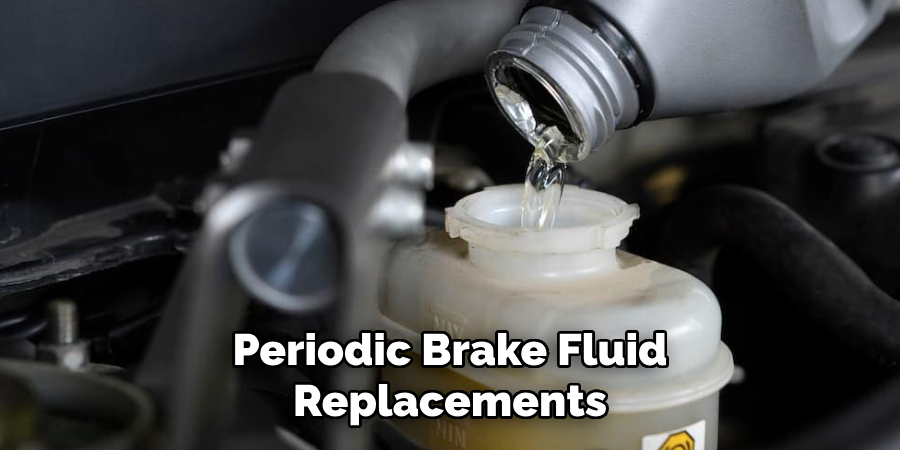
Don’t wait for a problem to arise; adhere to your manufacturer’s recommended service schedule, which usually includes periodic brake fluid replacements. This will ensure the fluid is in good condition for longer and will reduce the risk of leaks.
Proper Handling and Storage of Brake Fluid
Brake fluid can be sensitive to moisture, so keeping its container tightly sealed and stored in a cool, dry area is crucial. Also, never use brake fluid from an unsealed or visibly compromised container to avoid introducing contaminants into your brake system.
The Urgency of Addressing Brake Fluid Leaks
A Call to Swift Action
Ignoring a potential brake fluid leak can lead to a domino effect of problems that are not only dangerous but also more expensive to fix than catching and repairing the issue early on.
The Safety of Self and Others
Your car may be your personal transportation, but it affects the safety of everyone on the road. Addressing leaks ensures that you will have the confidence to know that your car can stop when you need it to.
Conclusion
In conclusion, mastering the art of finding brake fluid leaks is indispensable for maintaining vehicle safety and reliability. By understanding the signs, conducting thorough inspections, and employing appropriate diagnostic techniques, individuals can detect and address brake fluid leaks effectively. Prompt identification and repair of leaks prevent potential accidents, ensure consistent braking performance, and prolong the lifespan of brake system components.
It’s crucial to remain vigilant and proactive in monitoring the condition of the braking system, as even minor leaks can escalate into significant issues if left unchecked. By prioritizing regular inspections and addressing leaks promptly, drivers can enhance their safety and that of others on the road. Remember, investing time and effort in learning how to find a brake fluid leak pays off in the form of smoother, safer, and more reliable driving experiences.

About
JeepFixes Team is a skilled author for Jeep Fixes, bringing 6 years of expertise in crafting a wide range of jeep fixes. With a strong background in jeep fixes work, JeepFixes Team’s knowledge spans various types of fixtures, from decorative pieces to functional hardware, blending precision with creativity. His passion for jeep fixes and design has made him a trusted resource in the industry.
Professional Focus:
Expert in Jeep Fixes : JeepFixes Team aesthetic specializes in creating durable and innovative jeep fixes, offering both appeal and functionality. His work reflects a deep understanding of jeep fixes techniques and materials.
Sustainability Advocate : He is dedicated to using sustainable practices, ensuring that every fixture is crafted with eco-friendly methods while maintaining high-quality standards.
In his writing for jeep fixes, JeepFixes Team provides valuable insights into the latest trends, techniques, and practical advice for those passionate about jeep fixes, whether they are professionals or DIY enthusiasts. His focus on combining artistry with engineering helps others discover the true potential of jeep in design.
